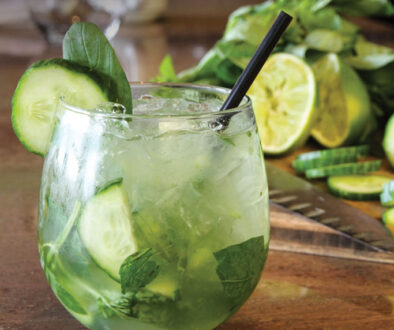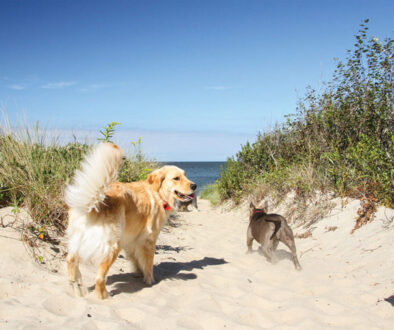The World is Your Oyster

In 2013 in Minneapolis, Minnesota, I started believing in fate because of a batch of oysters.
My friend Kelly and I were on across-country trip from Pennsylvania to Washington State. At one point,we were heading to North Dakota from Wisconsin—a 10-hour drive, if we did it nonstop. We realized we needed to make a pit stop or else our exhaustion would take over. We settled on Minnehaha Park, which is located a little outside the city of Minneapolis. It was a beautiful park that was filled with families and scenic hiking trails.
I’d been feeling anxious before our trip. Of course, my excitement for my friend’s new chapter trumped all other emotions. She was moving to Washington for grad school for the next two years; I was just along for the ride.
I had blindly said yes to driving across the country, and I packed up and went without a second thought. I was nervous about what new experiences the trek would bring, especially since we were two young women on our own traveling through states neither of us had ever explored. I also was in a time of transition in my life—figuring out what I wanted to do and what made me happy—and felt this trip could provide some answers for my internal battles.
We walked around the park searching for something to beat the summer heat, and we found a large tent where people were ordering seafood, went up to the counter and saw a huge blackboard advertising which type of oysters were the special of the day. And on that particular day, the oysters were from Eld Inlet in Washington, which was the exact spot where Kelly and I were headed, the very same body of water Kelly would be living on upon her arrival in Washington.
Clearly, we were right where we were supposed to be. Who knew that oysters could teach you valuable lessons about life?
As it turns out, Cape May’s Betsy Haskin did.
“Some days are perfect, and some days you just have to suit up and be ready for it,” Haskin explained. Even though she’s talking about her experience as a lifelong oyster farmer, it sounds to me like some of the best life advice I’ve ever heard.
Haskin is one of the three oyster farmers that make up the Cape May Oyster Co-Operative. She, her husband and her son (when he’s not away at college) work often seven days a week in the Delaware Bay to raise and harvest the oysters known as Cape May Salts.
New Jersey’s oyster farming industry can be traced all the way back to the 1800s. In 1880 the industry was at one of its most fruitful times; almost two and a half million bushels of oysters were harvested from the Delaware Bay.
Reading the tides is imperative when raising oysters, since they are exposed at low tide. Farmers can walk out through the marsh to examine their oysters and determine if they’re ready for harvest. Haskin says the summer is one of the best times of the year to harvest them—besides the warm and beautiful weather, the days are longer, providing farmers with two low tides a day to check on the oysters.
Haskin and her team rely on the New Jersey Aquaculture Innovation Center hatchery for their new oyster seeds, or larvae.Once she obtains the seeds—which, upon acquisition are as tiny as one of our pinky nails—she and her team place them in mesh envelope-like bags. They are then anchored one foot off of the bay’s seafloor. This is called a “rack and bag” method, a highly sustainable, environmentally friendly way of growing oysters.
“We go through about five bags before our oysters are market size,” Haskin noted. “Changing the bags and keeping them clean, that’s the biggest job through the growing season.”
Haskin then sells her oysters to a local wholesaler in Cape May County whom she’s known for many years, and her delicious homegrown oysters end up in restaurants throughout Cape May, Philadelphia, Atlantic City, Trenton and Princeton.
“It’s a lot of work, but it’s good work,” Haskin said.
Haskin grew up with an appreciation for the oyster farming industry mainly because of her father, the late Dr. Harold Haskin. When he was an undergraduate at what was then known as Rutgers College, Dr. Haskin secured a summer job there, studying the biology of the oyster drill, a snail that feeds on oysters.
Dr. Haskin went on to serve in the army during World War II, and earned his Ph.D. in the physiology of algae from Harvard University. He returned to Rutgers in 1946 and eventually took over directorship of the school’s shellfish laboratory.
In the late 1950s, a parasite called MSX (multinucleated sphere unknown) infected oysters throughout the Delaware Bay. In about a year and a half, the MSX parasite had killed off 95 percent of oysters in the bay. The widespread epidemic stopped oyster fishing in its tracks for quite some time, affecting Cape May’s economy and putting the jobs of oyster farmers at risk. Dr. Haskin extensively researched the harmful organism and found a solution through breeding disease-resistant oysters. And these disease-resistant oysters are still being used by farmers today.
“He just loved it,” Haskin said of her dad’s passion for studying and becoming an expert on oysters and other various sea mollusks. “It was truly his thing.”
Throughout his lifetime, Dr. Haskin studied oysters in all different types of laboratories, with locations ranging from a small houseboat to the Rutgers’ lab that is now named after him: The Haskin Shellfish Research Laboratory (HSRL). Atlantic Capes Fisheries, a leading harvester of shellfish from the North and Mid-Atlantic regions, has been using these selectively bred, disease-resistant oyster seeds from the HSRL since the late 1990s.
Cape May County Director of Economic Development Carole Mattesich recognizes the hard work and dedication of the Haskin family, as well as Cape May County’s other devoted oyster farmers.
“Oyster farmers are salt of the earth people,” Mattesich stated. “They know cutting edge techniques and are nature lovers and environmental enthusiasts.”
Farming oysters continues to be an important part of Cape May’s economic advancement. Mattessich and other county leaders stay in constant touch with oyster farmers, making sure they have the resources they need to stay in business.
Recently, Planning Department members assisted farmers in getting a grant to purchase a refrigerated truck; transporting oysters during hot summer months can be quite challenging. They need a place to be stored that will keep them fresh while getting them to where they need to go. The truck was a wonderful victory for the county and the oyster farmers using it.
Mattessich said that a meeting was held with oyster farmers and winery operators to discuss a “multi-functional facility,” where aquaculture and spirits would be able to collaborate and thrive. It would be a place where tourists visiting Cape May could sample the tasty Cape May Salts with a glass of wine, while also learning about the eco-friendly ways in which these oysters are grown. Visitors would even be able to see the oyster flats if they desired.
“We hope to continue seeing methods and projects that will help oyster farmers increase their yield,” she said. “The demand is there. We just have to continue finding ways to increase the supply.”
Learning about this exciting new facility jogged a memory of mine, a time when I was visiting Cape May Point with my parents. It was mid-January of this year, and I was freshly home from a six-month backpacking trip around the world. Even though it was winter, I had missed my family’s home in Cape May Point so much while I was away, and made my parents take a road trip with me from our home in Pennsylvania to the Point. There’s something magical about the shore in the winter: the empty beaches, rough seas and cozy nights in are some of my favorite things.
The weekend we visited just so happened to be the same weekend that a massive blizzard hit the tri-state area. Saturday night came around and there was a foot of snow outside our door. It was freezing, and it had been snowing all day long. We were basically ready to call it a night at 5pm. But we decided to go out and brave the elements anyway.
We drove slowly as a snail to Congress Hall, braving the wind and cold. We parked and trudged outside in our huge jackets and snow boots, joined by other residents and visitors to the shore. All of us were laughing and shaking our heads at how crazy we must be to be out in this weather. My parents and I made it to Congress Hall, snagged a seat in the Brown Room bar area and split a plate full of Cape May Salts while we listened to a local guitar player singing classics. It was such a happy and fun night that I won’t soon forget.
Whether they’re teaching two young women on a cross-country trip to appreciate exactly where they are, being critically studied and analyzed in order to save future mollusks, being grown in a natural way that’s low impact to the environment, or being enjoyed among family and friends, oysters are important. They are a vital part of the Cape May community, and are a business that keeps growing and becoming even more in-demand and successful thanks to the skill and expertise of area oyster farmers. I can’t wait to see what the future holds for the famous Cape May Salts.







